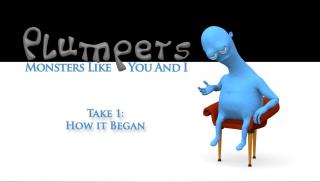-
Posts
5,412 -
Joined
-
Last visited
-
Days Won
89
Content Type
Profiles
Forums
Events
Everything posted by Fuchur
-
Best wishes of course from me to... sorry for being late... *Fuchur*
-
That has to be one of the most or the most complex model ever created in A:M. VERY impressive! *Fuchur*
-
Here is a short description how to disable desktop composition: LINK *Fuchur*
-
Do you use Windows Vista? You have to deactivate the Desktop-Composition for Animation:Master there. Another option is to change the driver for Realtimeviews for A:M. -> Options > Global > Direct3d/OpenGL... switch this. *Fuchur*
-
Good one... *Fuchur*
-
Very nicely done... you may want to increase the density of SSS a bit so. Dont know what you are using now? 100%? Try 200%. See you *Fuchur*
-
As I understand it, he doesnt own a subscription... he just didnt know which update to get. *Fuchur*
-
Lets face it: A:M cant be run on Windows 3.1 neighter... sorry to say that, but if you change your OS to something that hadnt been out I think it is quite comon to not be able to run the programm... Not Hash or A:M is to be blamed here... apple is... if they change that much and doesnt stay at compatible it is not A:Ms fault. I would recommend you to use an older computer with the old OS, go to a windows-machine for testing A:M or / and get A:M v15 if you like it. It is a pitty that you never could find the time in 5 years to try it out so... See you *Fuchur*
-
Snap to Grid is named okay if you ask me.. it just has a bit strange behaviour if you edited the position of an existing point. Nevertheless that is useful too. It will not allow you to place a new CP anywhere but only on the grid. For the lathe-options: Just CTRL + Click on the lathe-tool-button and the options will appear... makes things much faster. *Fuchur*
-
And I am from the material-effector-section. *Fuchur*
-
Yep, its common in the movieindustry no matter where you go He says: "Cut, all back to the beginning / lets start again..." Thanks for the comments It is meant to become a small series with him... till now it is only Take 1 so... I just wanted to train my (close to not existing ) characteranimation-skills and wanted to have a story for that... *Fuchur*
-
Just wanted to show a small short-idea of mine... Have fun with the plumpers (No offence meant... next time they will be called plompers...) (h264, mp4) *Fuchur* take_01_how_it_began.zip plompers_take_01.zip
-
Go Options -> Folders and have a look if the pathes there are correct and/or put some new pathes in. There is also a whole guide what to do, but I cant find it right now. *Fuchur*
-
If you didnt do it till now, you should sooner or later think about splitting the model into several model-files to avoid Findig-Patches-Problems. *Fuchur*
-
If your models are created with Subdivision Surfaces and/or very well designed edgeloops, you will have good results... if not you wont. *Fuchur*
-
I dont think that Steffen has anything against it, but please make sure to ask people before downloading something from their websites and uploading it somewhere else... That is just not too polite... anyway: Thanks for the tut. *Fuchur*
-
Sounds a bit much too me, but anyway: Nice start. *Fuchur*
-
All white should work. *Fuchur*
-
You can use a ambiance-intensity-map to make that possible. It is a greyscale-image where the full ambiance-areas are represented by white and the none-ambianced parts are black. Or you can create a group and manipulate its surfaceproperties. The group should have the exact same size like the decal. *Fuchur*
-
There is no need for simcloth to manipulated geometry. For A:M there is no difference between "cloth" or the body at first. You can define patches to being cloth in a simulation, but other than that it is just geometry like anything else too. You can of course use (Fan-)Bones (with CP-weights), SmartSkins and CP-Animation to keep cloth (or any other geometry) where you want it while animating. It highly depends on what you want to do: - Throusers for instances shouldnt be simulated with SimCloth. (or at least it is hard to too). - Skirts can be simulated with simcloth. If you set SimCloth in the right way up, it will produce very nice results, but it is hard to do that. One thing you should however know: Lets say you are trying to animate a skirt. Not your whole skirt has to be manipulated by SimCloth. It will be enough if only one or two spline-rings at the end of the skirt will be simulated by simcloth and the other stuff will be manipulated by CPs, SmartSkins FanBones or anything else. The thing is: For SimCloth you need a deflector. That means underlying geometry. For the other attempts you will often like to only model the skirts, etc and dont model the hips underneath. This will help you to rig the skirt without having to worry about intersections, etc. So how should you begin? I would recommend to try a few things out before you are going to do "the heavy stuff". Do a few SimCloth-simulations with simple stuff, Rig a few things with SmartSkins, Fanbones and or CP-Weights. Starting with a complex character to understand what these things wont lead you to your aim. Before you do the heavy stuff, you have to practise a bit. *Fuchur*
-
H264 and other will only show up in CamStudio if you download FFdshow. You can do it with another workflow using super and the loose-less-codec so. I recommend using FFdshow with MotionJpeg-Codec and after that using Super, Vegas or Quicktime Pro to make a mp4 from it. *Fuchur* PS: FFdshow can be downloaded here: Sourceforge
-
You should have a look at the individual draw-possibilities in hybrid-realtime-mode. (press 7 on your keyboard, not key-pad / num-block) In the PWS > Choreography you will find a button next to the objects in the scene, with which you can go to a Peak-Display-Mode, Box-Display-Mode or Invisible-Display-Mode. These modes are ONLY for realtime-rendering. Finalrendering wont be changed. I think if you would use the Box-Displaymode for all the parts you don't need, A:M should handle it just fine again. (cant test it so) And you can still see the dimensions of your objects. -> I only assume that, but when I worked on a high-patch-count-model I did it and it worked much more fluid. Make sure you are really in hybrid-realtime-mode / defaul-mode not in wireframe. Wireframe and the others will globally overwrite the settings you are setting in the pws-chor next to the models. *Fuchur*
-
CamStudio does all that without the watermark and it will use any codec you got on your PC with FFDshow installed (which is free too) and it even provides a codec for highquality video-capturing (not distribution but to edit with it). Jing is nice, but has several drawbacks I dont like. Flash is nice, but only a real h264 is really well suited for videocaptures. Flash can do h264, but most software creating flashmovie cant and will still use On2 or even Sorenson... Camstudio is really a nice programm for screencaptures... it doesnt have many drawbacks to camtasia studio but it is free. I really like it. *Fuchur*
-
You should convert it with Vegas or if you want to go free Super to for example h264. Anyway it depends on the screensize. If you are using a screen-resolution of 1600 x 1200 it will result in much larger filesizes than for example 1024 x 768. I use 1024 x 768 for all of my videos. You should scale your A:M-Window to that size before capturing -> This will result in a better quality and less time to convert the video. For Screencaptures you wont need many fps. So use for example 10 frames / s. Depending on how fast you move the mouse of course, but generally it will be enough. -> Using a lower value will decrease the filesize. My workflow is the following, but this is for high-quality-results: - Use MotionMPEG to capture the video (this creates really really huge files with a near to uncompressed quality) - Convert it using Vegas to h264-movs If you dont own a software like Vegas or Quicktime Pro you can do it like this, but you will need a newer computer: - Use h264, Xvid or Divx for capturing. This is much harder to do for CamStudio, so you may suffer under low framerates. If you dont have this options available in CamStudio's Videosettings, download FFD-Show. If you got any other questions, let me know. See you *Fuchur*










